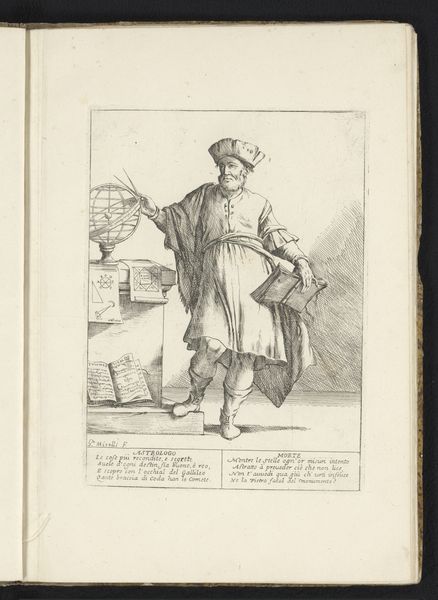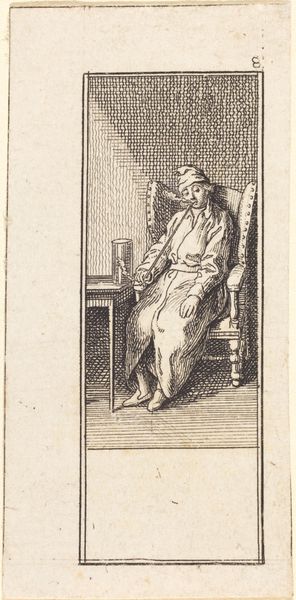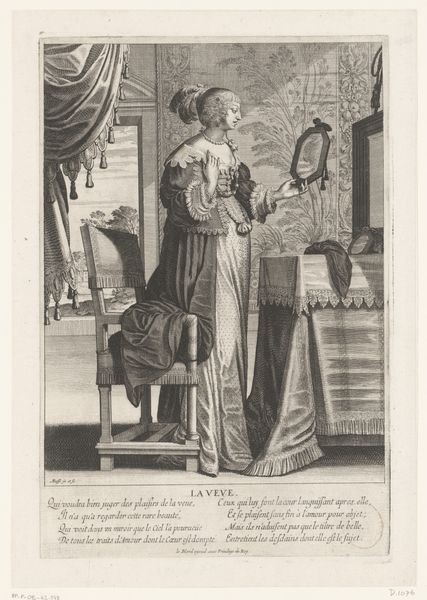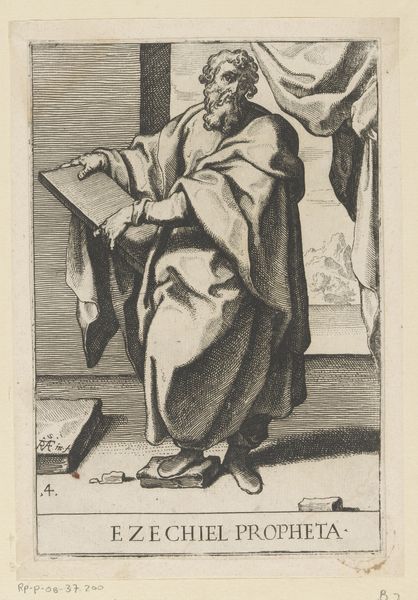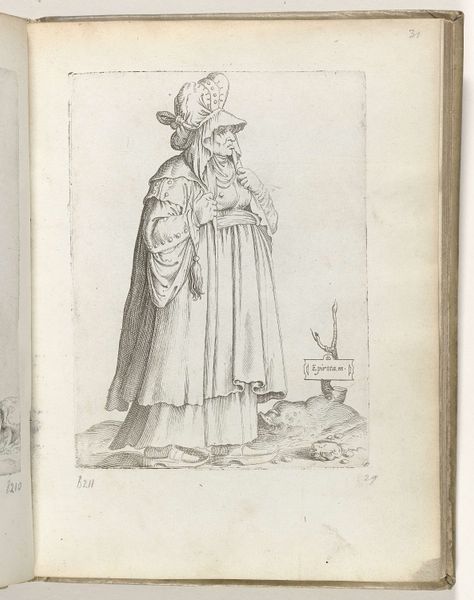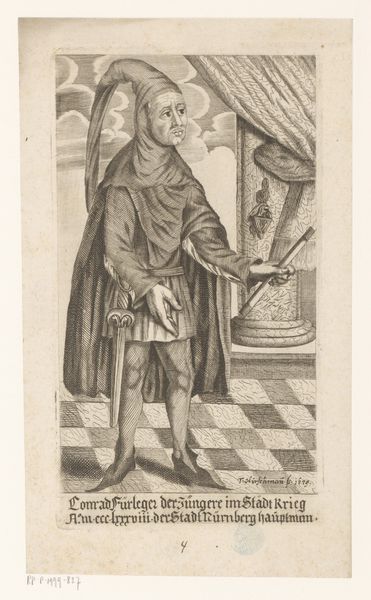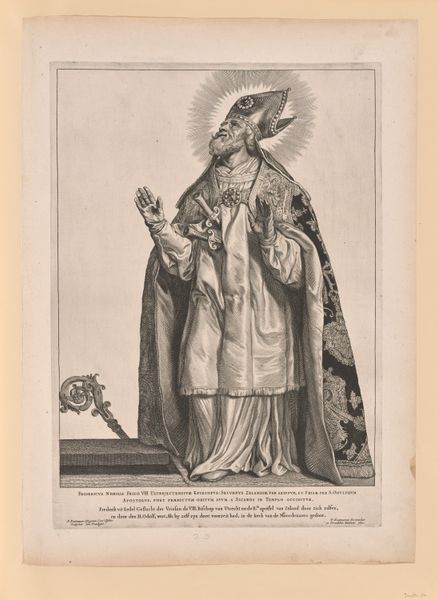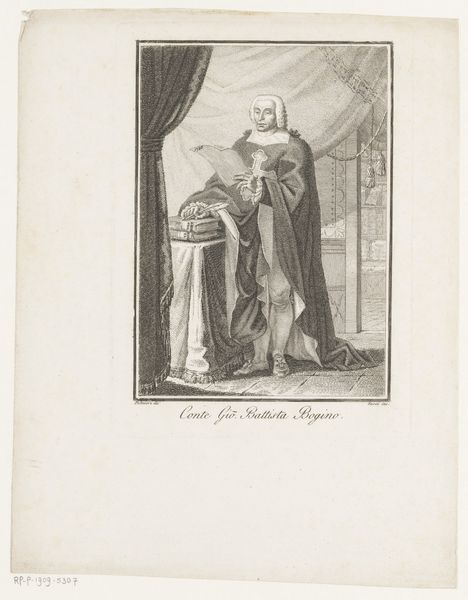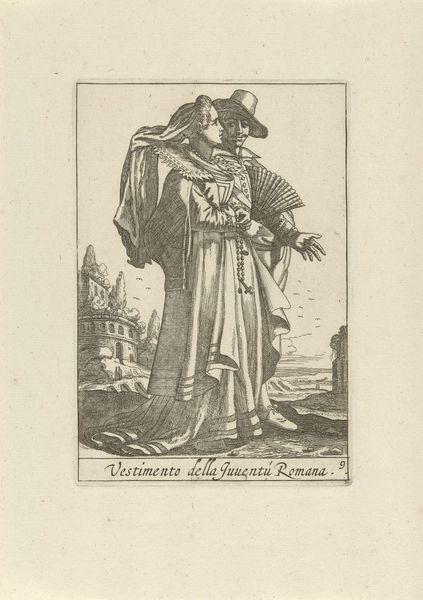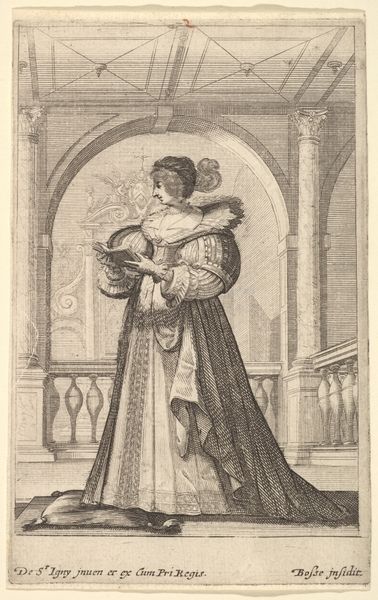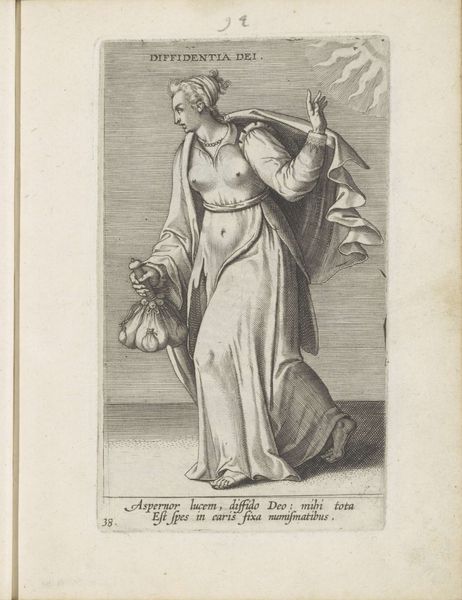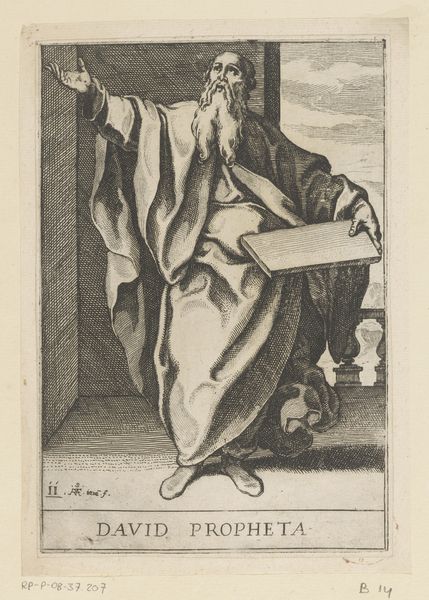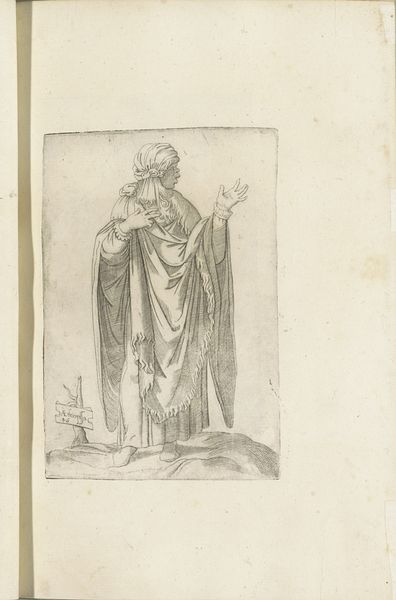
intaglio, engraving
#
portrait
#
baroque
#
intaglio
#
old engraving style
#
figuration
#
line
#
history-painting
#
engraving
Dimensions: height 182 mm, width 119 mm
Copyright: Rijks Museum: Open Domain
This print, made by Grégoire Huret sometime in the 17th century, is an engraving, a process that demands great skill and precision. The image is carved into a metal plate, likely copper, using a tool called a burin, and then printed. Look closely, and you'll see the extraordinary detail, line by line, that defines form, texture, and light. The density of the lines creates the shading and volume, bringing the man and his surroundings to life. The engraver’s artistry is evident in the man’s garments, the elaborate room behind him, and the way light reflects off various surfaces. Engraving like this was not just about aesthetics; it was a reproductive technology. Prints were a means of disseminating images widely, playing a crucial role in spreading ideas and information during the early modern period. The labor-intensive process speaks to the value placed on visual communication at the time. It also raises questions about the division of labor, and the relationship between the original artist and the skilled printmaker. Appreciating the work and the context of its making helps us see beyond the image itself.
Comments
No comments
Be the first to comment and join the conversation on the ultimate creative platform.

